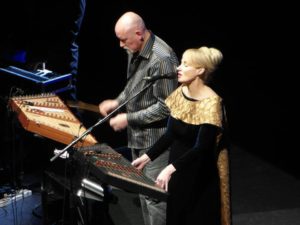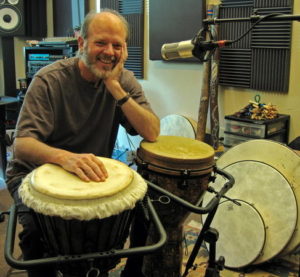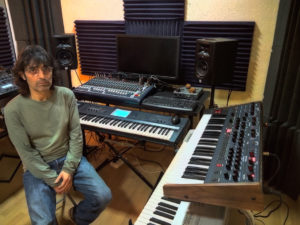[Photo: Osama Shukir Muhammed Amin. License: CC BY-NC-SA 3.0. Original here.]
We approach the conclusion of this series highlighting my most inspirational kindred spirits.
Part 1: Arvo Pärt, Steve Roach, Jack or Jive, Lucette Bourdin.
Part 2: Tingstad & Rumbel, Sequentia, Robert Rich.
Part 3: Steve Brand, David Hykes, Pat Metheny.
Part 4: Yes, Dirk Serries, Alio Die.
On an evening café outing in Toronto in 1995, I was fortunate to hear an ecstatic set of songs whose only possible category was the artists themselves. It was Toward the Within, a Dead Can Dance live album.
Lisa Gerrard and Brendan Perry have powered one of the great musical melting pots, pouring a world of styles and influences into an ecstatic vision quest. Everything went in, and something utterly alchemical and irreplaceable emerged. “Sanvean” just kills me every time I hear it, and “Song of the Sibyl” and “Rakim” have always blown me away. I would love to cover “Saltarello.” Brendan and Lisa are definitely a key musical influence of mine.
Performances on their last three North American tours (1997, 2005, 2012) remain lifetime musical highlights. The 1997 Toronto show, in particular, was just magic, attended with a loved one. The subsequent shows gave me the chance to introduce my daughter Janina and my wife Daci, respectively, to this music.
A leader in shamanic music, practice and teaching, Byron exploded on to my personal music scene with the landmark Serpent’s Lair album, a duo with Steve Roach. Words are not really up to describing the impact this music can have: it’s ecstatic, brave, exhilarating and joyous. It takes us down deep, into a wonderfully personal yet universal sacred place where – as our Klingon friends would say – to venture requires both honor and courage.
Two other favorites of mine are the trio albums Nada Terma and Dream Tracker, on which Byron and Steve teamed up with singer/flutist Mark Seelig and didgeridoo player Dashmesh Khalsa, respectively. For me, these are all essential tribal-shamanic-ambient releases.
Byron has also worked with Loren Nerell, Erik Wøllo and others. He’s one of my brothers whom I haven’t had the good fortune to meet, so far. Hopefully that will be remedied on my next Tucson trip.
Max has carved out a vast musical space over his 20-year career, with a series of beautiful, outstanding releases. My introduction to Max’s music was one of his best, 2009’s Ars Lucis. I summed up my review of Max’s 2011 album Lost Links:
“Lost Links is a perfect introduction to Max Corbacho’s music. If Max’s music is new to you, when you hear the quality of these pieces – leftovers from Max’s other albums – you will find it hard to resist discovering how great those albums are. That is an ongoing, joyful process: in my view, Max is one of our top-ranked ambient-electronic artists. His music is, quite simply, unforgettable, essential listening.”
While Max’s work would most often be classified as “space” music, several albums also have an organic-earthy quality and rhythmic elements.
Max’s albums also have wonderful artwork, usually created by Max himself using photos and software.
Continue to Part 6: A lady, a gentleman and a disciple.



